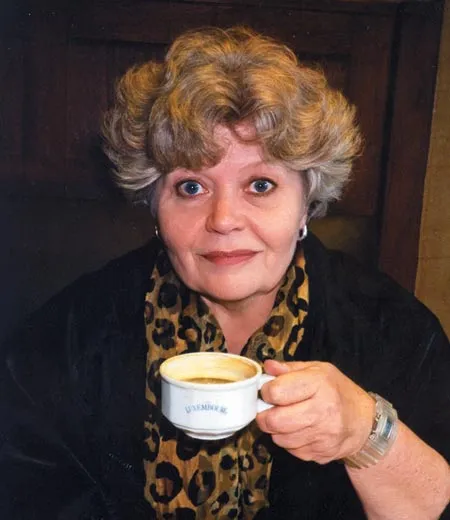The Woman Behind Miss Piggy
Muppet designer Bonnie Erickson on puppet storytelling and inspiration
/https://tf-cmsv2-smithsonianmag-media.s3.amazonaws.com/filer/erickson_qa_oct08_631.jpg)
Bonnie Erickson designed and built the inimitable Miss Piggy in 1974 for an early "Muppets" television special, produced by Jim Henson. Puppets, props and storyboards from Henson's prolific career are featured in the traveling exhibit "Jim Henson's Fantastic World." Anika Gupta spoke with Erickson.
You've been designing muppets and mascots for years. What attracts you to them?
The creation of worlds—the whole process of designing characters, putting together a back story, giving the characters an environment in which they can thrive and casting performers who can bring them to life.
Why do puppets appeal to adults as well as children?
They've been a tradition across the world for thousands of years as a form of storytelling. But, until recently, they have't been appreciated in the United States. Now, however, puppetry is finding a niche in the arts—dance, theater and even opera. I think people appreciate the performers' skill as well as the artistry of the puppets themselves. We owe a lot of that to [Muppets creator] Jim Henson's vision.
Who inspired the character of Miss Piggy?
My mother used to live in North Dakota where Peggy Lee sang on the local radio station before she became a famous jazz singer. When I first created Miss Piggy I called her Miss Piggy Lee—as both a joke and an homage. Peggy Lee was a very independent woman, and Piggy certainly is the same. But as Piggy's fame began to grow, nobody wanted to upset Peggy Lee, especially because we admired her work. So, the Muppet's name was shortened to Miss Piggy.
Of all the characters you've designed, which are among your favorites?
Statler and Waldorf, the two old men who heckled from the balcony in the Muppet Show. I could picture them in the Yale Club sipping brandy, surrounded by portraits of their predecessors. Another was Zoot, the blue-haired, balding saxophonist for the Muppet band "Electric Mayhem." He was fashioned after musician Gato Barbieri, based on a quick sketch I made when I saw him perform at a jazz club.
Let's say you get a contract to make a character. How does your creative process work?
Well let me take the Philly Phanatic as an example. The managers approached us to design a mascot who could encourage fans to bring their families to the games. So we had to design a character who was child-friendly, who was playful and a little irreverent but not too silly. We'd heard from the Phillies that their crowd had booed the Easter bunny, so it was a challenge to come up with something that was not going to talk down to their audience. We wanted a character who had a life and a story. A lot of our characters are still performing today. We created Youppi for the Montreal Expos, and when the team moved out of Montreal Youppi was left without a home. So he was taken in by the hockey team. In my mind I've always thought of these characters as having a life, so they're free agents in many ways. When they lose a team, they go out and try to find another job.
What does it take for a character to become a legend, as happened with Miss Piggy and the Phanatic?
Well, there are three factors. First, you need a good designer and a good concept. And in the case of puppeteers you need a really good performer. And then the client has to be very thoughtful and use the character well. When you put all these pieces together you have at least a shot at creating a character people will be drawn to.
/https://tf-cmsv2-smithsonianmag-media.s3.amazonaws.com/accounts/headshot/anika-gupta-240.jpg)


/https://tf-cmsv2-smithsonianmag-media.s3.amazonaws.com/accounts/headshot/anika-gupta-240.jpg)